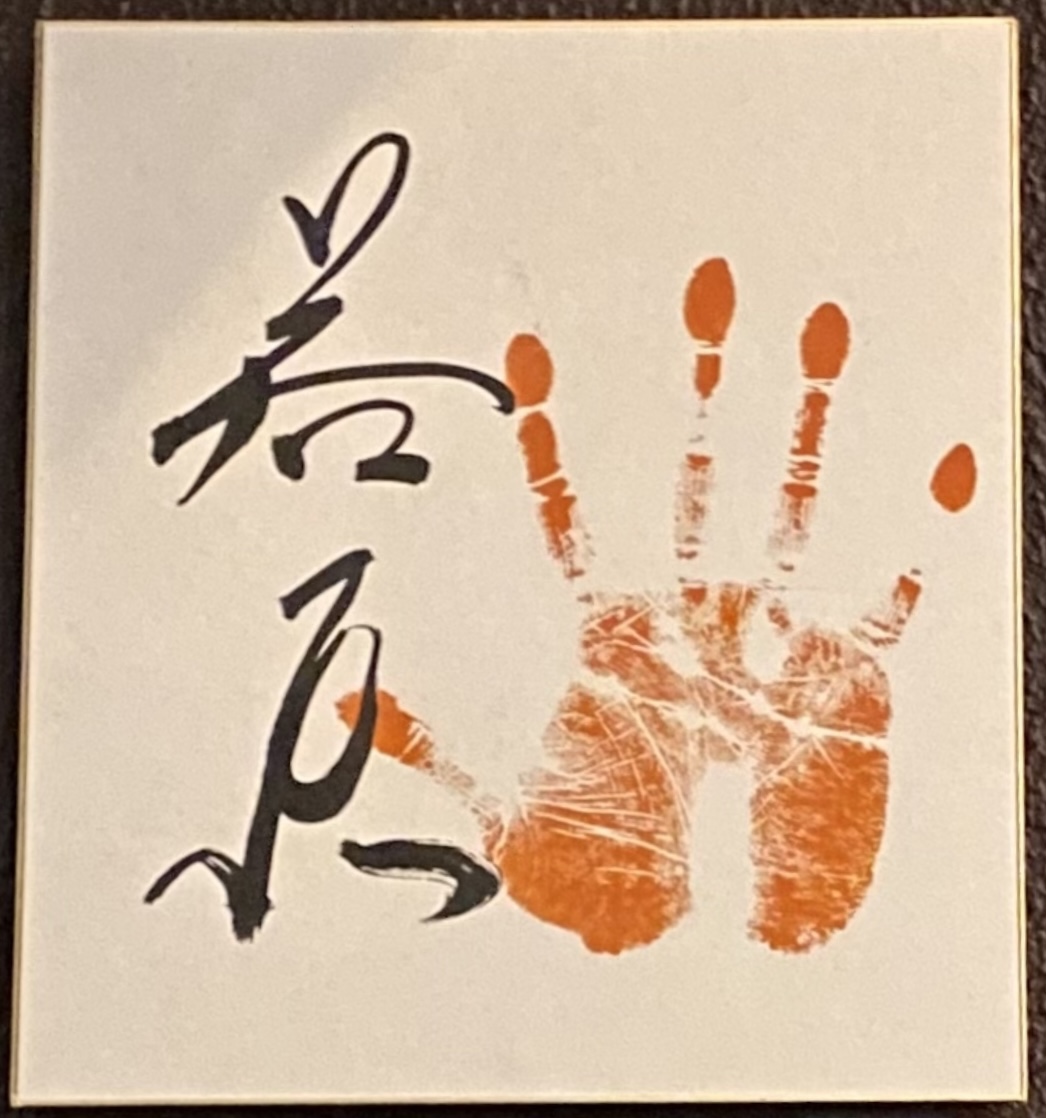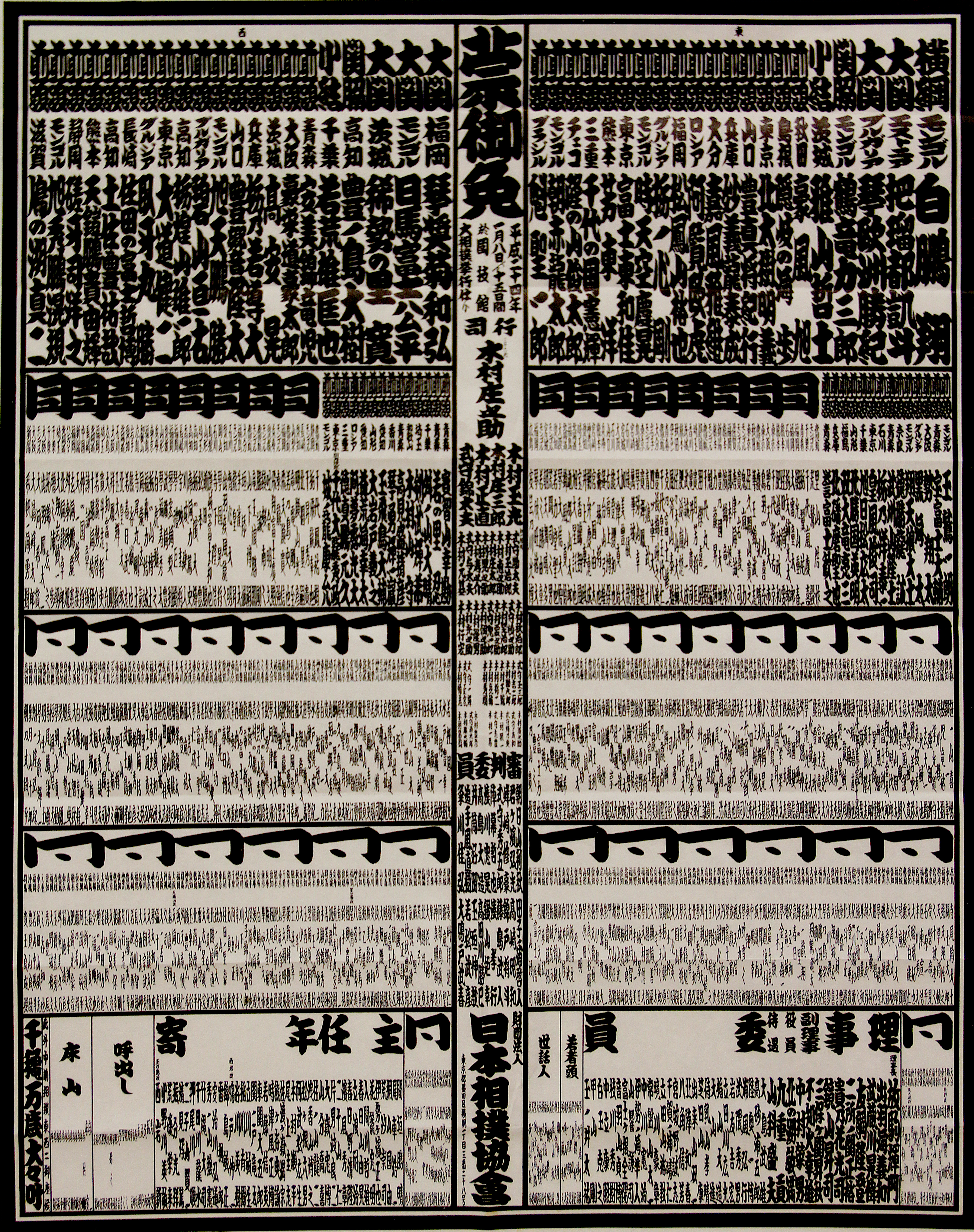|
Amūru Mitsuhiro
is a former professional sumo wrestler from Lesozavodsk, Primorsky Krai, Russia. After an initial influx of Russian wrestlers from the early 2000s, he was the last ethnic Russian in top level sumo. He made his debut in May 2002 and, after a serious knee injury in 2012 sent him down the rankings, reached the top ''makuuchi'' division in November 2014. His highest rank was ''maegashira'' 5. He had nine tournaments ranked in the top division, but finished his career in the third highest ''makushita'' division. Early life and sumo background Ivanov had no exposure to sumo in early life, though he was active in boxing during his student years. Later, his brother-in-law, who was Japanese, recommended he give sumo a try. With the help of the professional wrestler Akira Taue he was able to make a contact with former sekiwake Masurao, who was the owner of Onomatsu stable. He came to Japan and joined sumo together with the two Russian brothers who would join Kitanoumi stable and take the r ... [...More Info...] [...Related Items...] OR: [Wikipedia] [Google] [Baidu] |
Lesozavodsk
Lesozavodsk (russian: Лесозаво́дск) is a town in Primorsky Krai, Russia, located on the Ussuri River ( Amur's tributary), from the Sino–Russian border and about north of Vladivostok, the administrative center of the krai. Population: 37,000 (1972). History The first settlement on the site was founded in 1924 in connection with a sawmill. The settlement was originally named ''Dalles'' (), from the Russian word ''dalny'' for "distant" (referring to the Russian Far East) and ''les'' for "forest". In 1932, Dalles was merged with the nearby village of Novostroyka, granted urban-type settlement status and renamed Lesozavodsk. Lesozavodsk was granted town status in 1938. Administrative and municipal status Within the framework of administrative divisions, it is, together with twenty-one rural localities, incorporated as Lesozavodsk Town Under Krai Jurisdiction—an administrative unit with the status equal to that of the districts.Law #161-KZ As a munici ... [...More Info...] [...Related Items...] OR: [Wikipedia] [Google] [Baidu] |
Sports Trainer
Athletic training is an allied health care profession recognized by the American Medical Association (AMA)"What is an Athletic Trainer?". The Board of Certification Website. 2003. Athletic training is also recognized by the Health Resources Services Administration (HRSA) and the Department of Human and Health Services (HHS) as an allied health care profession. Athletic trainers (ATs) are health care professionals who render service or treatment under the direction of or in collaboration with a physician, in accordance with their education, training and the state's statutes, rules and regulations. The practice of athletic training encompasses health promotion and wellness and examination, diagnosis, immediate care, and rehabilitation of clients/patients with emergent, acute, and chronic health conditions. As defined by the Strategic Implementing Team of the National Athletic Trainers' Association (NATA) in August 2007. that "encompasses the prevention, examination, diagnosis, tre ... [...More Info...] [...Related Items...] OR: [Wikipedia] [Google] [Baidu] |
Danpatsu-shiki
The following words are terms used in sumo wrestling in Japan. A B C D E F G H I J K M N O R S T W Y Z References External links Glossary of Sumo TermsSumopediaat NHK World-Japan {{Glossaries of sports Sumo is a form of competitive full-contact wrestling where a '' rikishi' ... [...More Info...] [...Related Items...] OR: [Wikipedia] [Google] [Baidu] |
Jonidan
Professional sumo as administered by the Japan Sumo Association is divided into six ranked divisions. Wrestlers are promoted and demoted within and between these divisions based on the merit of their win–loss records in official tournaments. For more information see ''kachi-koshi'' and ''make-koshi''. Wrestlers are also ranked within each division. The higher a wrestler's rank within a division is, the stronger the general level of opponents he will have to face becomes. According to tradition, each rank is further subdivided into East and West, with East being slightly more prestigious, and ranked slightly higher than its West counterpart. The divisions, ranked in order of hierarchy from highest to lowest, are as follows: ''Makuuchi'' , or , is the top division. It is fixed at 42 wrestlers who are ranked according to their performance in previous tournaments. At the top of the division are the "titleholders", or "champions" called the ''san'yaku'' comprising ''yokozuna'', ... [...More Info...] [...Related Items...] OR: [Wikipedia] [Google] [Baidu] |
Wakaazuma
Wakaazuma Yoshinobu ( Japanese: 若東 吉信, born April 21, 1976 as Fernando Yoshinobu Kuroda (黒田 吉信 フェルナンド, ''Kuroda Yoshinobu Ferunando'')), is a retired second generation Japanese Brazilian professional sumo wrestler ('' rikishi'') from São Paulo, Brazil. Making his debut in September 1991, he reached the ''jūryō'' division in May 2001. His highest rank was ''jūryō'' 13. He retired from professional sumo in May 2003, going back to Brazil, where he opened many successful restaurants. Early life and sumo background Yoshinobu started training when he was 4 years old, as his father was a coach in a sumo club in São Paulo, in addition to sumo wrestling he also practiced swimming and soccer. In junior high school, Yoshinobu visited Fujishima stable to train alongside professional sumo wrestlers. When he was 15 years old, he met future ''ozeki'' Tochiazuma while he was in a trip to Brazil, where they became good friends. After graduating from junior ... [...More Info...] [...Related Items...] OR: [Wikipedia] [Google] [Baidu] |
Sekitori
A ''sekitori'' (関取) is a '' rikishi'' (力士, sumo wrestler) who is ranked in one of the top two professional divisions: '' makuuchi'' and '' jūryō''. The name literally translates to having taken the barrier, as only a relatively small fraction of those who enter professional sumo achieve ''sekitori'' status. Currently there are 70 ''rikishi'' in these divisions. The benefits of being a ''sekitori'' compared to lower ranked wrestlers are significant and include: * to receive a salary and bonus (those in the lower divisions merely receive an allowance) * to have one's own supporters' club * to wear high quality men's kimono and other items of attire * to have a private room in the training stable * to be able to get married and live away from the training stable * to have junior ''rikishi'' to effectively act as their personal servants * to wear a silk '' mawashi'' with stiffened cords (called ''sagari'') in tournament bouts * to participate in the ring entrance ceremony ... [...More Info...] [...Related Items...] OR: [Wikipedia] [Google] [Baidu] |
Jūryō
Professional sumo as administered by the Japan Sumo Association is divided into six ranked divisions. Wrestlers are promoted and demoted within and between these divisions based on the merit of their win–loss records in official tournaments. For more information see '' kachi-koshi'' and '' make-koshi''. Wrestlers are also ranked within each division. The higher a wrestler's rank within a division is, the stronger the general level of opponents he will have to face becomes. According to tradition, each rank is further subdivided into East and West, with East being slightly more prestigious, and ranked slightly higher than its West counterpart. The divisions, ranked in order of hierarchy from highest to lowest, are as follows: ''Makuuchi'' , or , is the top division. It is fixed at 42 wrestlers who are ranked according to their performance in previous tournaments. At the top of the division are the "titleholders", or "champions" called the ''san'yaku'' comprising '' yokozun ... [...More Info...] [...Related Items...] OR: [Wikipedia] [Google] [Baidu] |
Banzuke
A , officially called is a document listing the rankings of professional sumo wrestlers published before each official tournament ('' honbasho''). The term can also refer to the rankings themselves. The document is normally released about two weeks before the tournament begins. On the ''banzuke'', wrestlers are divided into East, which is printed on the right, and West, which is printed on the left. Each wrestler's full '' shikona'' (ring name), hometown and rank is also listed. The top of the page starts with the highest ranked '' makuuchi'' wrestlers printed in the largest characters, down to the wrestlers in the lowest divisions which are written in much smaller characters. The names of '' gyōji'' (sumo referees), '' yobidashi'' (ushers/handymen), '' shimpan'' (judges), '' oyakata'' (elders of the Japan Sumo Association), and occasionally '' tokoyama'' (hairdressers) are also listed. While not as old as sumo itself, the form and production of this document can be trac ... [...More Info...] [...Related Items...] OR: [Wikipedia] [Google] [Baidu] |
Masunoyama
is a Japanese former professional sumo wrestler from Sakae, Chiba. He turned professional in July 2006 and was the first wrestler born in the Heisei era to become a ''sekitori'' when he was promoted to the ''jūryō'' division in November 2010, alongside Takayasu. He reached the top '' makuuchi'' division in September 2011. He was injured in his top division debut and fell back to ''jūryō'', but he returned in July 2012 and scored eleven wins, winning the Fighting Spirit Award. A serious knee injury sustained in 2015 resulted in him falling greatly in rank, and he was not able to return to ''sekitori'' status. He retired in May 2021. Early life and sumo background He was born in Iloilo City in the Philippines to a Filipino mother and a Japanese father. His family moved to Japan when he was about one month old. His parents had always been fans of sumo and from a very young age he had aspired to be a sumo wrestler. He was a member of the sumo club at his primary school, and w ... [...More Info...] [...Related Items...] OR: [Wikipedia] [Google] [Baidu] |



